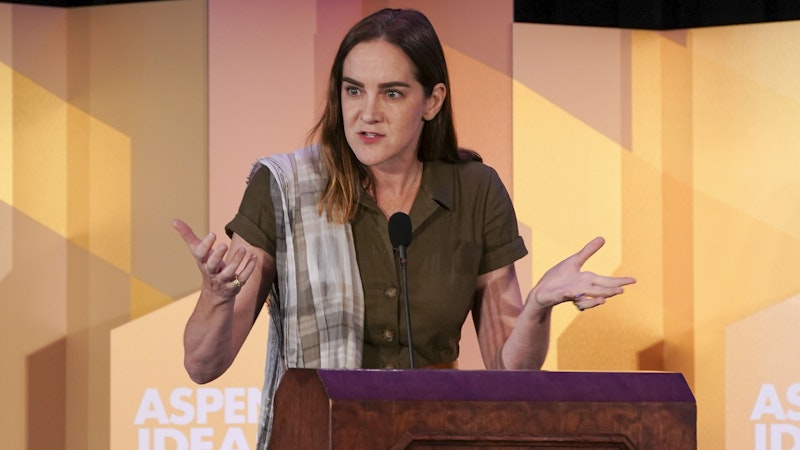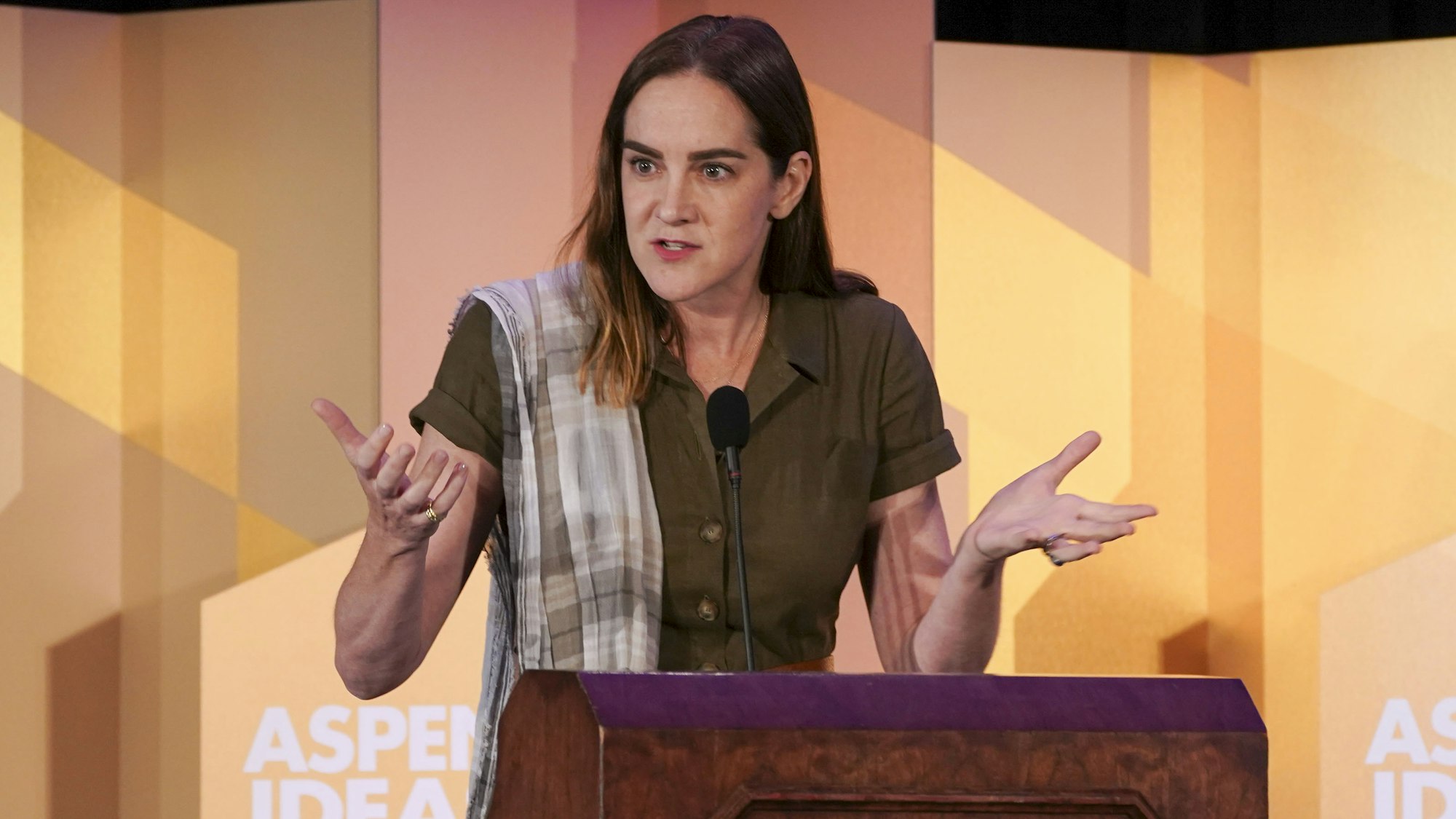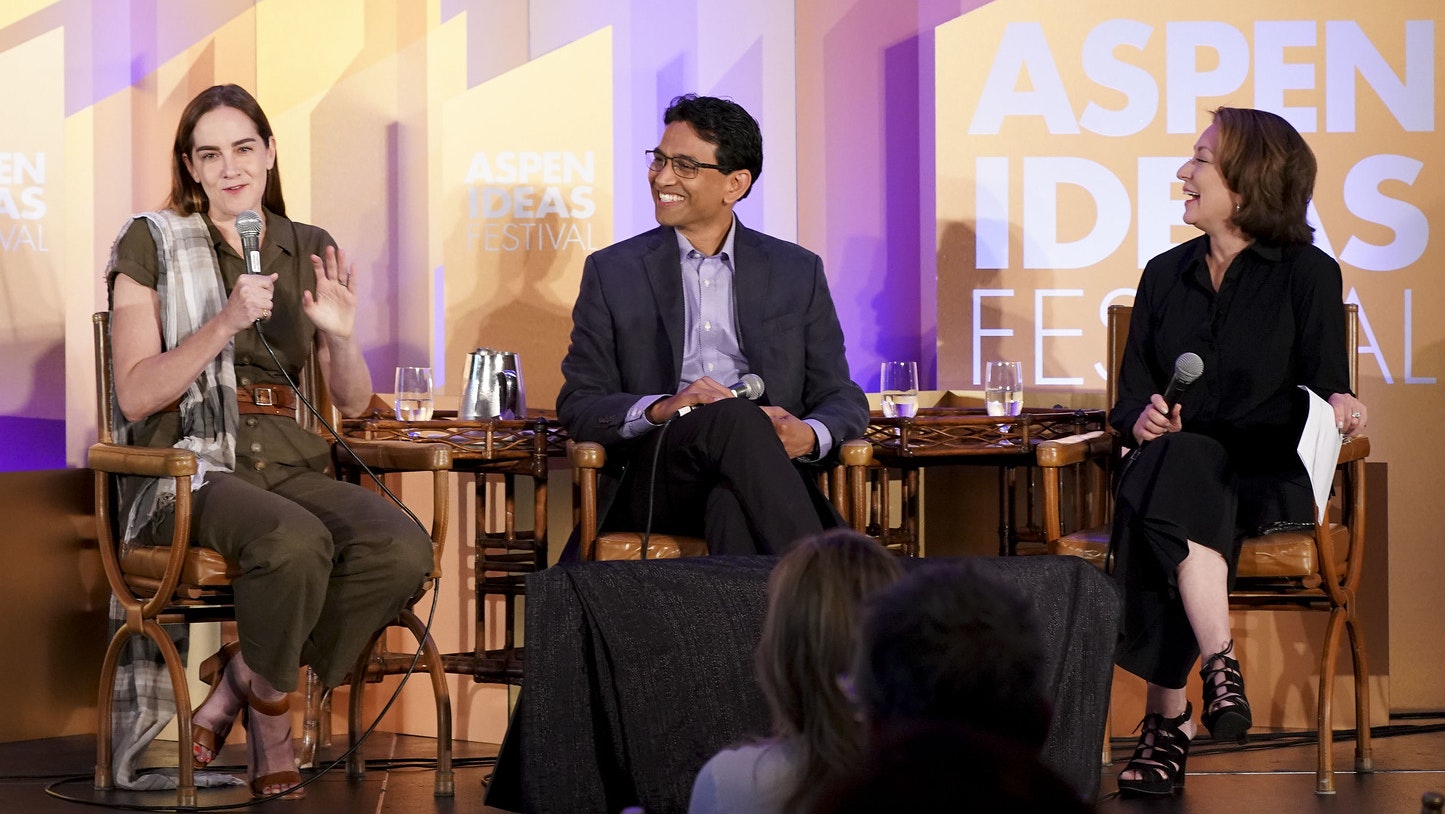

The Fate of Food: What We'll Eat in a Bigger, Hotter World
Setup
With crop production increasingly threatened by unpredictable weather and a world population expected to grow 30 percent by midcentury, how are we going to feed everyone? The race to reinvent the global food system is on, and solutions you’ve probably never heard of are already in play. One company is tackling problems around industrial agriculture by growing cell-based meat in a lab, eliminating both the need for animal slaughter and the grains we grow to feed them. Imagine a world where industrial animal farming and its harmful greenhouse gases no longer exist, where beef, poultry, and fish are consumed without interfering with the food chain.
- 2019 Festival
- Environment
- Health
How do you grow animal-less meat?
Nearly 100 percent of people in the world eat meat, and 750 billion pounds of meat are consumed every year, says Uma Valeti. . So how do you ensure access to safe and healthy meat for generations to come? Valeti’s company, Memphis Meats, harvests meat from cells insteads of animals — it’s not a meat alternative or plant-based protein. The company wants to preserve people’s choice to eat meat while using fewer natural resources, producing less waste, and emitting less greenhouse gas emissions. Watch Valeti explain the process of cultivating animal cells into meat:
There’s a fundamental advantage when you grow meat from cells, says Valeti — the only job those cells have is to become high quality meat cells. They don’t have to perform natural processes like growing hair, skin, and bones, so it takes 90 percent less resources to get the same amount of meat that you would from a live animal. What’s more, the production process is much shorter; growing cell-based meat takes 3 to 4 weeks as opposed to 9, 24, or 36 months depending on the animal species. Valeti also emphasizes the safety aspect of his product — because the meat is grown in a highly controlled environment from beginning to end, contamination is less likely.
The food revolution requires synergy
The pressures of population growth and climate change are intensifying and, at the same time, the world is seeing an increase in demand for food and a significant decrease in supply. How can we make clean, sustainable food equitable and available to everyone, not just the elite? This is a question Amanda Little, professor of investigative journalism at Vanderbilt University, found herself asking. She spent three years researching food production around the world. The answer, she says, requires synergy between diverse modes of food production.
Did you know?
In research for her book, Little explored everything from robotics, vertical farms, and GMOs to permaculture and edible insects. She says there’s a great divide between the reinventors of food and those who want food to be “de-invented.” She believes the path forward must reconcile old and new approaches to food production, and Uma Valeti agrees. “There’s a lot of tools in the toolkit we need to use,” he says. “We need conventional agriculture, regenerative agriculture, cell-based meat, we need plant-based proteins to be able to feed this growing demand.” Watch Little give an example of how modern technology can be intelligently applied to support traditional food production:
Bringing the food of the future into the mainstream
You can’t expect everyone to adopt new foods right away, says Uma Valeti, so Memphis Meats is working to demystify its cell-based products for consumers. He says personal experiences drive market growth: when you or someone you know has eaten a new product and enjoyed it. We’ve already seen that happen with products like the Impossible Burger and Beyond Meat, says Amanda Little. “There’s a lot of interest and excitement around alternatives.”
By the numbers
A number of other cell-based meat startups are competing in the same space, but this doesn’t worry Valeti. Having other companies in the market is a good thing, he explains, because it proves the value of the market, gets people comfortable with eating cell-based meat, and paves the way for more innovation. As for a timeline, we can expect to start seeing products like Memphis Meats in our grocery stores within the next few years. Just like any new technology, adds Little, as time goes on it will become increasingly accessible and affordable.
Learn More
Additional Information
Resources
Memphis Meats
The Fate of Food: What We’ll Eat in a Bigger, Hotter, Smarter World
The Race to Bring Meat Alternatives to Scale
Why This Cardiologist Is Betting That His Lab-Grown Meat Startup Can Solve the Global Food Crisis
Meat for a Hungry Planet
Explore More
Environment

Take a sneak peek at some of the big thinkers and innovative doers who will take the stage at Aspen Ideas: Health from June 20-23, 2024!


Climate change is demanding an extraordinarily rapid transformation of human society, and we don’t have a manual. The people who have done the least to cause the problem are t...

At Aspen Ideas: Climate 2024, the world's most ambitious climate problem solvers came together in Miami Beach to address our collective future on this planet. Watch highlights...

Museums are typically testaments to the past, but a growing number are using exhibitions to shape our response to the future—specifically to climate change. Museum leaders wil...

Coastal cities are utilizing innovative solutions to adapt to extreme weather and rising sea levels, becoming more resilient in the face of climate change. From innovative des...

Storytelling, music, animation, and podcasts! Watch the magic of innovative content being born as creatives pitch their ideas to a panel of Planet Media judges, each hoping to...

The impacts of the climate emergency are felt by populations worldwide, and they increasingly shape whether, where, and how people migrate. Mayors, city governments, non-profi...

Katharine Hayhoe is an atmospheric scientist and Chief Scientist for The Nature Conservancy. Ahead of Aspen Ideas: Climate next week, we caught up with Dr. Hayhoe to discuss t...

Since 2014, Aspen Ideas: Health has welcomed over 700 inspiring women leaders to our stages to share their bold approaches to better health. In honor of Women's History Month,...

During Aspen Ideas: Health 2023, four innovators shared how they are using new technologies to reimagine the common health devices we use to treat patients and improve their q...

How is constitutional law being harnessed to address climate change? Ahead of Aspen Ideas: Climate, we caught up with Andrea Rodgers, Senior Attorney at Our Children's Trust,...


After millennia of human existence, we’re still figuring out and talking constantly about one of our most fundamental behaviors – sex. Despite the sexual revolution of the 60s...

As Aspen Ideas: Health wraps-up its 10th anniversary year, we're excited to share the ten most-watched sessions from the event. These conversations with artists, advocates, in...

Rose Kirk is the Chief Corporate Social Responsibility Officer for Verizon. We caught up with her about tech-based climate solutions and why digital skills and connectivity ar...


When Duke divinity school professor Kate Bowler wrote her best-selling memoir, “Everything Happens for a Reason (and Other Lies I’ve Loved),” she was grappling with the conseq...


For adults, the pressure to drink at social engagements, work events, restaurants or almost anywhere outside the home can feel constant. Recent research has found that “no amo...

Whether expressed through systems that are easy to navigate, devices that are friendly to their users, and spaces that are pleasing to the eye, thoughtful design can break dow...

At Aspen Ideas: Climate 2023, we dug into some of the biggest environmental issues of our time, from sea level rise and deforestation to food insecurity and energy policy, and...

Your first look at the leaders, innovators, policymakers, and luminaries joining us for Aspen Ideas: Climate 2024. Don't wait to hear from these extraordinary speakers — early...


Climate change catastrophes are already happening with increasing regularity, and it’s clear we need to take action. The Biden administration has set a target of zero carbon e...














